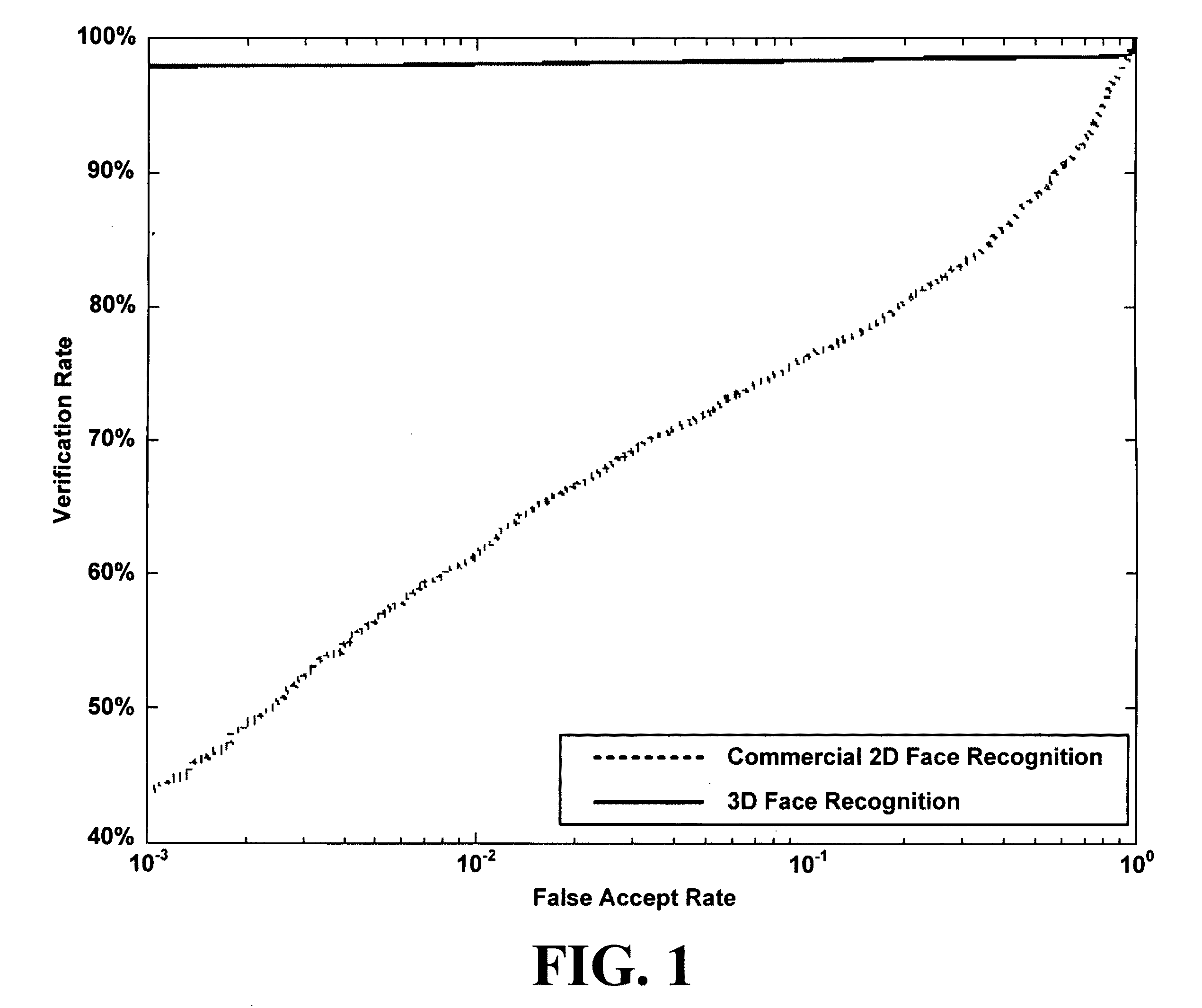An automated method for human face modeling and relighting with application to face recognition
a face recognition and human face technology, applied in the field of 3daided 2d face recognition, can solve the problems of uniform sampling, introduction of real facial data, and non-uniform use of facial scans, and achieve no common reference point between facial scans
- Summary
- Abstract
- Description
- Claims
- Application Information
AI Technical Summary
Benefits of technology
Problems solved by technology
Method used
Image
Examples
Embodiment Construction
[0057]The inventors have found that a novel method for 3D-aided 2D face recognition under large pose and illumination changes can be constructed. Specifically, the novel method employs 3D data or 3D derived from 2D data for enrollment and 2D data for verification / identification. During the enrollment process, the raw subject 3D data or raw 3D derived data from 2D data are fit using a subdivision-based deformable model framework. During authentication, only a single 2D image is required. The subject specific fitted annotated face model from a gallery is used to lift a texture of a face from a 2D probe image, and a bidirectional relighting algorithm is employed to change the illumination of the gallery texture to match that of the probe. Then, the relit texture is compared to the gallery texture using a view-dependent complex wavelet structural similarity index metric. The inventors have shown that using this approach yields significantly better recognition rates, with an equal error ...
PUM
 Login to View More
Login to View More Abstract
Description
Claims
Application Information
 Login to View More
Login to View More - R&D
- Intellectual Property
- Life Sciences
- Materials
- Tech Scout
- Unparalleled Data Quality
- Higher Quality Content
- 60% Fewer Hallucinations
Browse by: Latest US Patents, China's latest patents, Technical Efficacy Thesaurus, Application Domain, Technology Topic, Popular Technical Reports.
© 2025 PatSnap. All rights reserved.Legal|Privacy policy|Modern Slavery Act Transparency Statement|Sitemap|About US| Contact US: help@patsnap.com



